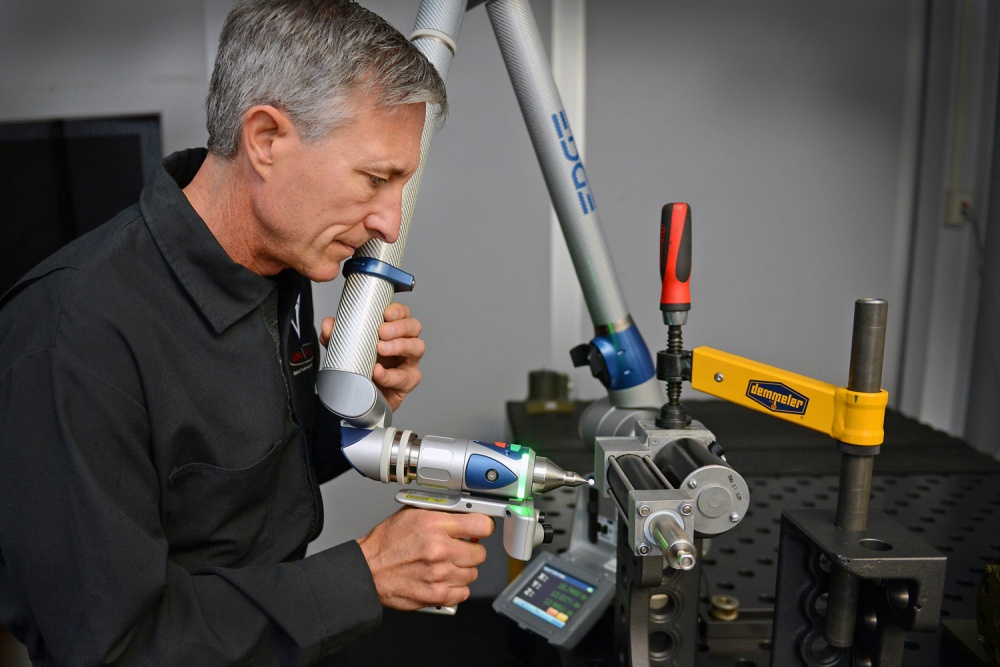Engineers from the Space and Naval Warfare Systems Command (SPAWAR), an echelon of the U.S. Navy based in California, have used 3D printing to restore an important AN/TRC-194 antenna.
This antenna uses an azimuth drive, a configuration used to rotate the whole antenna around a vertical axis, to deliver real-time communications throughout naval combat operations.

The scan-to-CAD-to-fab method
Failures of the U.S. Navy’s azimuth antenna drive began in 2015 due to rainwater intrusion. As a result of ongoing errors from the system, the SPAWAR System Center Pacific’s (SSC Pacific’s) Reverse Engineering – Science and Technology for Obsolescence, Restoration and Evaluation (RESTORE) lab were inspired to develop a new cover with 3D scanning and printing technology.
”The RESTORE lab is a reverse engineering laboratory which uses a process that identifies a target obsolescence issue in a legacy system—usually a single-point-of-failure component or assembly—and creates a modern form, fit and function replacement, to support life-cycle-extension programs for legacy systems,” said Stephen Cox, Chief Engineer for the RESTORE lab.
The team, as well as the Program Executive Office for Command, Control, Communications, Computers and Intelligence’s (PEO C4I’s) Undersea Communications and Integration Program Office (PMW 770), recognized that replacement parts for the antenna were obsolete due to its inception in 1988. The antenna pedestal was also built using a sand casting technique which meant that the original cast could no longer be found.
Therefore, the teams began using a 3D laser scanner to capture the geometry of the entire antenna. The data was then converted into a CAD model capable of the full antenna range of motion. Cox has dubbed this process “as the scan-to-CAD-to-fab method.”
“The scan-to-CAD-to-cab method lowers the cost and increases the speed at which a unique product can be made. It also facilitates rapid changes and the product becomes better, faster, with each engineering cycle.”

The U.S. Navy’s adoption of additive manufacturing
The U.S. Navy has integrated additive manufacturing throughout recent years to both streamline its supply chain and reduce production costs. Earlier this year, the U.S. Naval Air System Command (NAVAIR) estimated that it will have approximately 1,000 3D printed parts approved for use across the fleet before the end of 2018, with 135 3D printed parts currently authorized.
The U.S. Navy’s Fleet Readiness Center Southeast (FRCSE) in Jacksonville, Florida, also recently 3D printed its first part for use inside a T-44 Pegasus airplane. Following this, the U.S. Office of Naval Research (ONR) awarded Concurrent Technologies Corporation (CTC) a two year $2.6 million contract to enable cost-effective, on-demand production of 3D printed metal parts, for use in maintenance, repair, and overhaul (MRO). The ONR stated:
“Aging Naval platforms are being challenged by dwindling traditional sources of supply. In response to this need, the Naval Warfare Centers, maintenance depots, and FRCs [Fleet Readiness Centres] plan to use additive manufacturing to produce small quantities of out-of-production or long lead-time metallic components.”
Keep up with the latest 3D printing news by subscribing to the 3D Printing Industry newsletter. Also, follow us on Twitter, and like us on Facebook.
Searching for new talent or seeking a career change? Search and post 3D Printing Jobs for opportunities and new talent across engineering, marketing, sales and more.
Featured image shows Stephen Cox, a chief engineer at SPAWAR using a laser scanner while working in the Restoration Lab. Photo via Alan Antczak/U.S. Navy.


